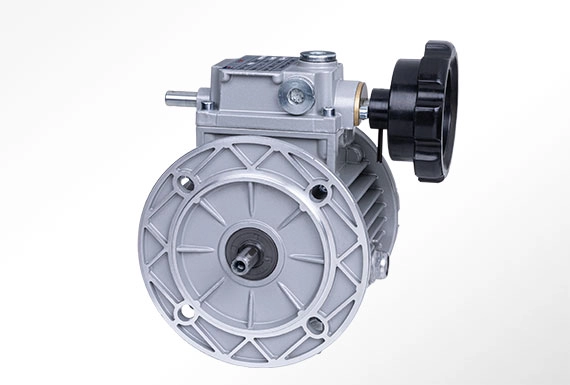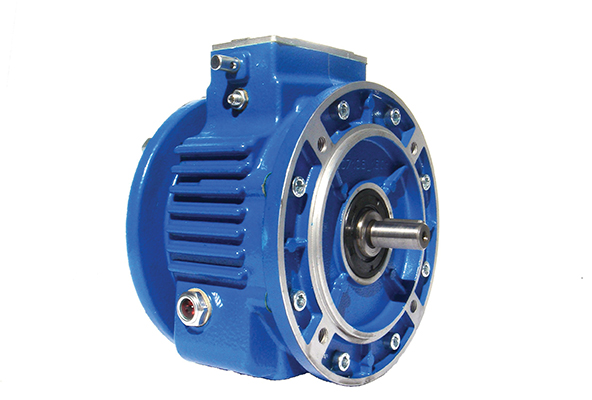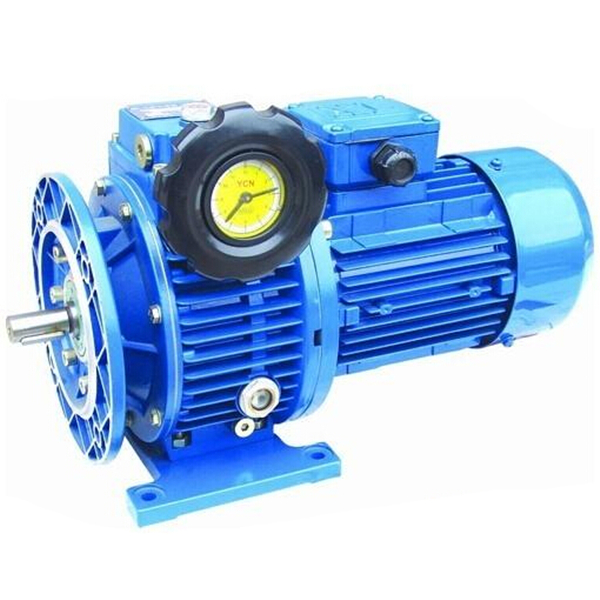Product Description
High EMC vsd inverter SPEED VARIATOR with 2 years warranty
Product Description
Single-phase/three-phase 220V-240V 0.4kW-2.2kW
Three-phase AC 340V-460V 0.75kW-450kW
The EM730 series inverter is a high-reliability general-purpose inverter launched by SINEE. EM730 supports three-phase AC asynchronous motors and permanent magnet synchronous motors. They support a variety of drive control technologies, such as the vector VF (VVF) control and speed sensorless vector control (SVC); speed output and torque output; and Wi-Fi access and background
Features of the EM730 series inverter:
1.Support the mobile APP and Wi-Fi module to facilitate inverter debugging and monitoring
2.Reliable operation with full load at 50°C ambient temperature
3.Integration of special functions for rewinding and unwinding
4.Support the high-frequency output up to 3000Hz for driving high-speed motors
5.Support the 100kHz high-speed pulse input
6.Metal substrate should adapt to the vibratory environment to reduce the induced voltage of the motor.
7.Built-in filter is close to Level C3.
Product Parameters
| Item | Specification | |
| Power supply | Rated voltage of power supply | Three-phase 340V-10% to 460V+10%,Single-phase/three-phase 200V-10% to 240V+10%;50-60Hz ± 5%; voltage unbalance rate: <3% |
| Output | Maximum output voltage | The maximum output voltage is the same as the input power voltage. |
| Rated output current | Continuous output of 100% rated current | |
| Maximum overload current | 150% of heavy-duty rated current for 60s (185kW-450kW: 140% of heavy-duty rated current for 60s) 120% of light-duty rated current for 60s |
|
| Basic control | Driving mode | V/F control (VVF); speed sensorless vector control (SVC) |
| Input mode | Frequency (speed) input, torque input | |
| Start and stop control mode | Keyboard, control terminal (two-line control and three-line control), communication | |
| Frequency control range | 0.00~600.00Hz/0.0~3000.0HZ | |
| Input frequency resolution | Digital input: 0.01Hz/0.1Hz Analog input: 0.1% of maximum frequency |
|
| Speed control range | 1:50(VVF),1:200(SVC) | |
| Speed control accuracy | Rated synchronous speed ± 0.2% | |
| Acceleration and deceleration time | 0.01 s to 600.00 s / 0.1 s to 6,000.0 s / 1 s to 60,000 s | |
| Voltage/frequency characteristics | Rated output voltage: 20% to 100%, adjustable Fundamental frequency 1Hz to 600Hz/3000Hz, adjustable |
|
| Torque boost | Fixed torque boost curve Any V/F curve is acceptable. |
|
| Starting torque | 150%/1Hz(VVF) 150%/0.25Hz(SVC) |
|
| Precision torque control | ±5% rated torque (SVC) | |
| Self-adjustment of output voltage | When the input voltage changes, the output voltage will basically remain unchanged. | |
| Automatic current limit | Output current is automatically limited to avoid frequent overcurrent trips. | |
| DC braking | Braking frequency: 0.01 to maximum frequency Braking time: 0~30S Braking current: 0% to 100% of rated current |
|
| Signal input source | Communication, multi-speed, analog, etc. | |
| Input and output | Reference power supply | 10V/20mA |
| Terminal control power | 24V/100mA | |
| Digital input terminal | 5-channel digital multi-function input: X1 to X5 X5 can be used as the high-speed pulse input (max. 100kHZ). |
|
| Analog input terminal | 2-channel analog inputs: One (AI1) voltage source: -10 to 10V input; One channel (AI2): 0 to 10V input voltage or 0 to 20mA input current optional; |
|
| Digital output terminal | Multi-function output of 1 open collector and 1 relay Maximum output current of the collector: 50mA; Relay contact capacity: 250VAC/3A or 30VDC/1A, EA-EC: normally open; EB-EC: normally closed |
|
| Analog output terminal | One multi-function analog terminal output M1: 0-10V/0-20mA multi-function analog output terminal |
|
| Operation panel | LED display | The LED digital tube displays relevant information about the inverter. |
| Protection | Protective Function | Short circuit, overcurrent, overvoltage, undervoltage, phase loss, overload, overheat, load loss, external fault, etc. |
| Use conditions | Location | Indoor, at an altitude of less than 1 km, free of dust, corrosive gases and direct sunlight. When the altitude is higher than 1km, it is derated by 1% per 100m. The maximum allowable altitude is 3km. |
| Applicable environment | -10ºC to +60ºC, 5% to 95% RH (non-condensing). When the ambient temperature exceeds 50°C, it needs to be derated by 3% per 1°C temperature rise. The maximum allowable ambient temperature is 60°C. |
|
| Vibration | Less than 0.5g | |
| Storage environment | -40ºC~+70ºC | |
| Installation method | Wall-mounted or installed in the cabinet | |
| Protection level | Protection level | Standard IP20/IP21 (with plastic baffle) |
| Cooling method | Cooling method | Forced air cooling |
Installation Instructions
Company Profile
/* January 22, 2571 19:08:37 */!function(){function s(e,r){var a,o={};try{e&&e.split(“,”).forEach(function(e,t){e&&(a=e.match(/(.*?):(.*)$/))&&1
| Application: | Three Phase Transducer, Single-phase Transducer |
|---|---|
| Output Type: | Triple |
| Principle of Work: | Vector Control Transducer |
| Switch Mode: | PWM Control |
| Main Circuit Type: | Voltage |
| Voltage of Power Supply: | Low Voltage Variable-Frequency Drive |
| Customization: |
Available
|
|
|---|

What role do variators play in enhancing fuel efficiency in vehicles and machinery?
Variators, particularly those used in vehicles and machinery equipped with continuously variable transmissions (CVTs), play a crucial role in enhancing fuel efficiency. By optimizing the power delivery and enabling the engine to operate more efficiently, variators contribute to reducing fuel consumption and improving overall energy efficiency. Here’s a detailed explanation of the role variators play in enhancing fuel efficiency:
1. Continuous Adjustment of Gear Ratio:
Variators in CVTs allow for the continuous adjustment of the gear ratio within their operating range. This means that the engine can operate at the most efficient speed for a given driving condition. By continuously optimizing the gear ratio based on the vehicle’s speed and load, variators enable the engine to stay within its optimal power band, where fuel efficiency is highest. This continuous adjustment ensures that the engine operates at the most efficient RPM (revolutions per minute) for a given speed, resulting in improved fuel efficiency.
2. Elimination of Inefficient Gear Shifts:
Traditional transmissions with discrete gear ratios require frequent gear shifts during acceleration or deceleration. These gear shifts can lead to inefficient engine operation and increased fuel consumption. In contrast, variators in CVTs eliminate the need for gear shifts altogether. The smooth and continuous adjustment of the gear ratio provided by variators ensures that the engine can maintain a consistent and optimal speed, even during changes in vehicle speed. This elimination of inefficient gear shifts helps to improve fuel efficiency by maintaining the engine within its efficient operating range.
3. Precise Engine Control:
Variators enable precise control of the engine speed, allowing for finer adjustments to match the desired vehicle speed. This precise engine control ensures that the engine operates within its most efficient range. Variators continuously optimize the gear ratio based on factors such as throttle input and vehicle speed, ensuring that the engine operates at the optimal RPM for the given driving conditions. By fine-tuning the engine speed, variators help to minimize unnecessary fuel consumption and maximize fuel efficiency.
4. Adaptive Power Delivery:
Modern variators in CVTs often feature advanced control systems that adapt the power delivery to match the driver’s demands and the road conditions. These control systems monitor various parameters, such as throttle input, vehicle speed, and engine load, and adjust the gear ratio accordingly. This adaptive power delivery ensures that the engine operates efficiently in real-time, optimizing fuel consumption. By adjusting the gear ratio based on the specific driving conditions, variators contribute to improved fuel efficiency by delivering the right amount of power for the desired performance.
5. Optimal Use of Engine Torque:
Variators facilitate optimal use of the engine’s torque characteristics. They can be designed to provide a wide range of gear ratios, allowing the engine to operate at the most efficient torque levels for a given speed. By utilizing the available engine torque effectively, variators help to reduce the strain on the engine and improve fuel efficiency. This optimal use of engine torque ensures that the engine doesn’t have to work harder than necessary, resulting in reduced fuel consumption.
6. Energy Recovery and Regeneration:
Some variators in hybrid vehicles or machinery configurations are designed to incorporate energy recovery and regeneration mechanisms. These systems capture and store energy that would otherwise be wasted during deceleration or braking. By converting the kinetic energy into electrical energy and storing it in a battery or capacitor, the energy can be reused to power the vehicle or machinery during acceleration. This energy recovery and regeneration feature helps to improve overall energy efficiency and reduce fuel consumption.
In summary, variators, especially in vehicles and machinery equipped with CVTs, play a crucial role in enhancing fuel efficiency. They achieve this by providing continuous adjustment of the gear ratio, eliminating inefficient gear shifts, enabling precise engine control, facilitating adaptive power delivery, optimizing the use of engine torque, and incorporating energy recovery and regeneration systems. By optimizing power delivery and engine operation, variators contribute to reduced fuel consumption, lower emissions, and improved overall energy efficiency in vehicles and machinery.

Can you provide insights into the importance of proper variator alignment?
Proper variator alignment is of utmost importance for the optimal performance and longevity of variator systems. The alignment refers to the precise positioning and alignment of the variator components, including the drive and driven pulleys, belts, and associated hardware. Here are some insights into the importance of proper variator alignment:
1. Efficient Power Transfer:
Proper variator alignment ensures efficient power transfer from the engine to the driven wheels. When the variator components are properly aligned, there is minimal power loss due to misalignment or slippage. This efficient power transfer allows the vehicle to operate at its maximum performance potential, providing better acceleration, smoother shifts, and improved fuel efficiency.
2. Optimal Belt Performance:
Variators rely on belts to transmit power between the drive and driven pulleys. Proper alignment ensures that the belts operate within their designed specifications. Misalignment can cause the belts to run off-center or at an angle, leading to increased wear, premature belt failure, and reduced overall performance. Aligning the variator components correctly ensures that the belts are properly tensioned and positioned, maximizing their lifespan and performance.
3. Reduced Wear and Tear:
Misalignment can result in excessive friction, heat buildup, and increased wear on the variator components. The misaligned pulleys and belts can cause uneven distribution of forces and place additional stress on the bearings, shafts, and other mechanical parts. Over time, this can lead to accelerated wear, premature failure of components, and costly repairs. Proper variator alignment helps minimize these issues, reducing wear and tear and increasing the lifespan of the system.
4. Smooth Operation:
Proper alignment contributes to smooth and seamless operation of the variator system. When the variator components are aligned correctly, the gear ratio changes occur smoothly without jerks or vibrations. This smooth operation improves the overall driving experience, ensuring comfortable shifts and consistent power delivery. Misalignment can result in erratic behavior, such as belt slippage, juddering, or sudden changes in power output, compromising the vehicle’s performance and drivability.
5. Prevents Excessive Noise and Vibration:
Misaligned variator components can generate excessive noise and vibration during operation. The misalignment can cause the belts to rub against the pulleys, leading to squealing or chirping noises. In addition, vibrations may occur due to the imbalanced forces generated by misaligned components. Proper variator alignment helps minimize these noise and vibration issues, ensuring a quieter and smoother operation of the system.
6. Avoids Premature Component Failure:
Misalignment places undue stress on the variator components, increasing the risk of premature failure. Bearings, shafts, pulleys, and other mechanical parts can experience excessive wear, fatigue, or damage when subjected to misalignment-related forces. By aligning the variator components correctly, the load is distributed evenly, reducing the risk of premature failure and extending the lifespan of the system.
7. Consistent Performance and Efficiency:
Proper variator alignment ensures consistent performance and efficiency throughout the lifespan of the system. When the components are aligned correctly, the variator operates as intended, delivering consistent gear shifts, power delivery, and fuel efficiency. Consistency in performance and efficiency is vital for a reliable and enjoyable driving experience.
In conclusion, proper variator alignment is essential for the optimal performance, longevity, and reliability of variator systems. It ensures efficient power transfer, optimal belt performance, reduced wear and tear, smooth operation, minimized noise and vibration, avoidance of premature component failure, and consistent performance and efficiency. Regular inspection and maintenance, along with professional alignment when necessary, are crucial to maintaining proper variator alignment and maximizing the benefits of the system.

How does a variator differ from traditional gear systems in vehicles?
A variator differs from traditional gear systems in vehicles in several ways. While traditional gear systems use discrete gears to provide specific gear ratios, a variator offers a continuously variable transmission (CVT) that can provide an infinite number of gear ratios within a specific range. Here’s a detailed explanation of how a variator differs from traditional gear systems:
Gear Ratio Variation:
In traditional gear systems, gear ratios are fixed and discrete. Vehicles with manual or automatic transmissions have a predetermined set of gears that are engaged based on the desired speed and load conditions. Each gear provides a specific ratio between the input (engine) and output (wheels) shafts. The gear changes occur through mechanical shifting or electronically controlled mechanisms.
In contrast, a variator in a CVT offers continuous gear ratio variation. Instead of discrete gears, a variator uses adjustable pulleys or other mechanisms to change the effective diameter or contact ratio between the driving and driven elements. This allows for seamless and continuous adjustment of the gear ratio, providing a smooth and efficient power transfer.
Stepless Gear Shifts:
In traditional gear systems, gear shifts occur in steps as the transmission shifts from one gear to another. Each gear ratio change results in a noticeable shift in engine RPM and vehicle acceleration. These stepped gear shifts can sometimes cause a jolt or interruption in power delivery.
On the other hand, a variator in a CVT allows for stepless gear shifts. Since the gear ratio can be continuously adjusted, there are no discrete steps between gears. This results in a smooth and seamless transition between gear ratios, without any noticeable gear shifts or jolts. The engine RPM can also be held at an optimal level for improved fuel efficiency and performance.
Optimized Engine RPM:
In traditional gear systems, the engine RPM typically varies with each gear change. The engine operates at higher RPMs during acceleration and lower RPMs during cruising to match the gear ratios.
A variator in a CVT enables the engine to operate at its optimal RPM for a given driving condition. By continuously varying the gear ratio, the engine can maintain a consistent RPM, optimizing fuel efficiency and power delivery. This allows the engine to operate within its most efficient power band, resulting in improved fuel economy.
Flexibility and Efficiency:
Traditional gear systems have a limited number of gears, which can sometimes result in less flexibility in finding the ideal gear ratio for a specific driving condition. This can lead to compromises in terms of performance or fuel efficiency.
A variator in a CVT offers greater flexibility and efficiency. It can continuously adjust the gear ratio to match the specific demands of the driver and driving conditions. This allows for improved performance, smoother acceleration, and better fuel economy by keeping the engine within its optimal operating range.
In summary, a variator in a CVT differs from traditional gear systems in vehicles by offering continuous gear ratio variation, stepless gear shifts, optimized engine RPM, and increased flexibility and efficiency. These differences contribute to a smoother driving experience, improved fuel economy, and optimized power delivery in various driving conditions.


editor by CX 2024-03-09